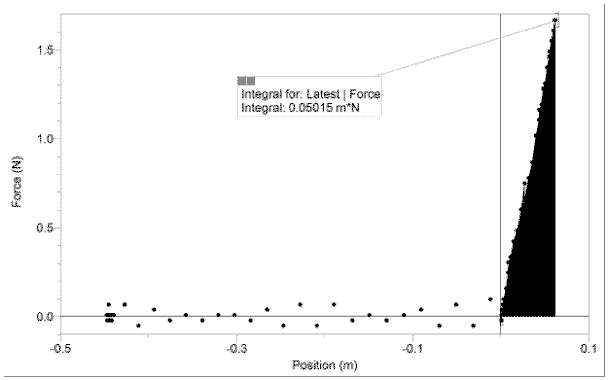The hoop spring bumpers in the Bumper and Launcher Kit are excellent examples of Hookean devices; that is, the length of the hoop spring is directly proportional to the force applied. To investigate Hooke’s law, attach a hoop spring bumper to a Dual-Range Force Sensor that is mounted to a Vernier Dynamics Cart on a track. Attach the Track Bracket near the end of the track and position a Motion Detector at the other end of the ramp pointing toward the Track Bracket.
In the software, reverse the direction of positive force for the Dual-Range Force Sensor. Position the cart such that the bumper is almost, but not quite, touching the end stop. With the cart in this position, zero both sensors. Start data collection and slowly move the cart toward the Track Bracket, compressing the spring. Slowly move the cart back out toward the zero position without going past the zero position. Create a scatter plot of force vs. position. Fit a straight line to the data to determine the force constant of the hoop spring. Notice the linear response of the hoop spring.
The hoop spring acts as an excellent cart launcher on the Dynamics Track. By combining the hoop spring, a Dual-Range Force Sensor, and a Motion Detector, students can investigate the relationship between spring potential energy, work, and kinetic energy. Use the same setup as described above. Start data collection and move the cart toward the Track Bracket, compressing the spring a few centimeters, and then release the cart.
Next, create a scatter plot of force vs. position. The section of the plot with a positive slope represents the compression of the spring; i.e., when work is being done on the spring. The area under the curve for that portion of the plot is the work done on the cart. You can determine the integral using Logger Pro software, as long as you sort the data on the position column.
From the position vs. time graph, students can determine the launch velocity of the cart. Knowing the mass of the cart, they can determine the kinetic energy and compare it to the work.




